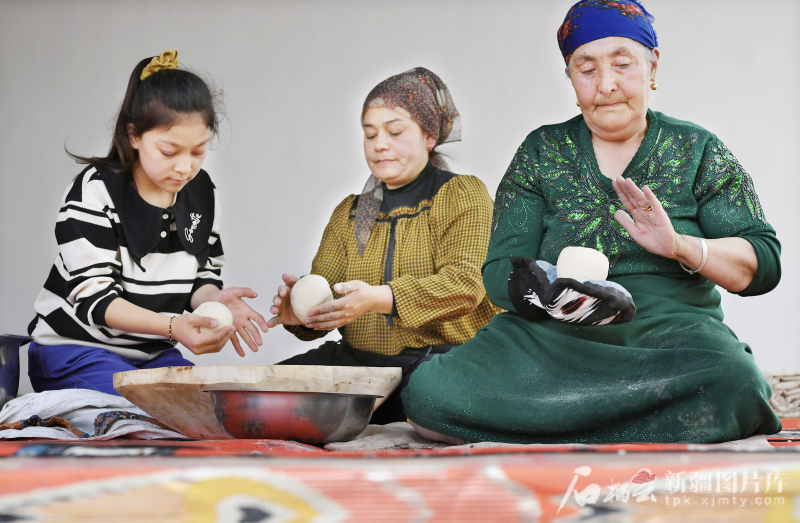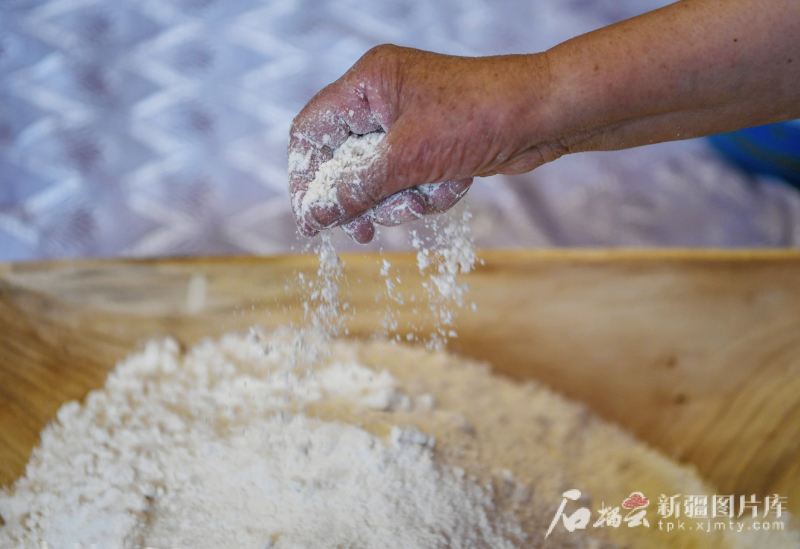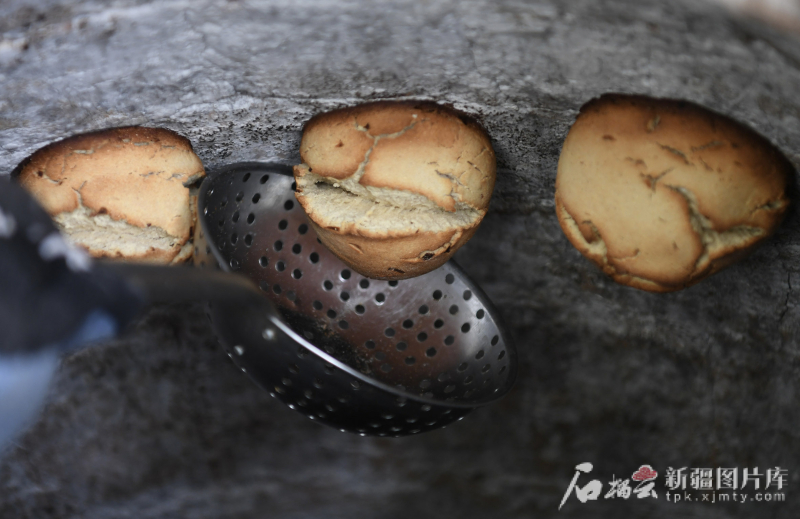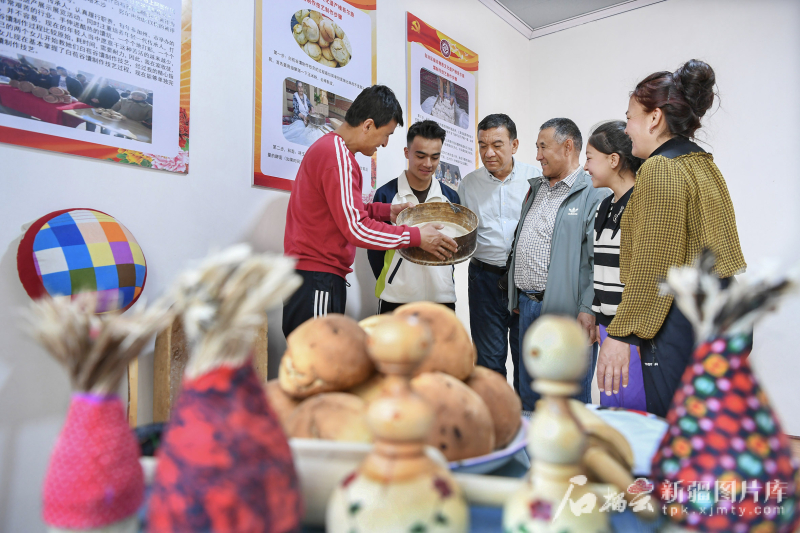
Photo shows Hatamsha Nur (R) bakes corn-flour naan with her families.
Shiliuyun-Xinjiang Daily (Reporter Otkur Nijat) news: When the reporter visited the home bakery of Hatamsha Nur in Langgan Village, Shangatushi Town, Artux City, Kizilsu Kirgiz Autonomous Prefecture, northwest China's Xinjiang Uygur Autonomous Region, the aroma of corn flour and roasted onions filled the air. Hatamsha, a 71-year-old master baker, was pulling freshly baked white corn-flour naan out of a traditional fire pit (commonly known as naan pit) with her daughter-in-law, Aigul Zulkun.
Hatamsha began learning the craft of making white corn-flour naan from her mother at the age of 17 and has now become a renowned master of this traditional skill.
The art of making Artux white corn-flour naan was recognized as a second-batch intangible cultural heritage project at the autonomous region level in Xinjiang. In March of this year, Hatamsha was selected as a national-level representative inheritor of this intangible cultural heritage.
Hatamsha selects only organic corn grown in her own fields for her naan bread. The process, though seemingly simple, is not easy to master.

Photo shows corn flour that has been finely sifted.
First, the corn flour must be sifted through a fine sieve to remove the bran. The sifted flour is then placed in a wooden basin, mixed with self-made yeast, and water is added gradually to form a dough. The dough is covered with a thick blanket and left to ferment for about two hours. When cracks appear in the dough, it is ready to be used.
To ensure the authentic flavor of the corn-flour naan, branches are used to fire the pit. Once the inner walls of the pit turn slightly red and the branches have turned into charcoal, a small amount of saltwater is sprayed inside. The shaped naan is then slapped against the inner walls of the pit and baked for about 20 minutes.

Photo shows Hatamsha Nur takes out baked naan from the naan pit.
The freshly baked white corn-flour naan is golden yellow, with a crack in the center, and exudes an alluring aroma. The outer layer is crispy, while the inside is soft and elastic, carrying the fragrance of corn.
Hatamsha regularly participates in intangible cultural heritage exhibitions held by local authorities and focuses on training the younger generation.

Photo shows Alisher Muhtar, the grandson of Hatamsha Nur, promotes the Artux white corn-flour naan through the Internet.
"The process of making white corn-flour naan is quite traditional and time-consuming. It requires patience, and fewer young people are willing to take it up these days," she said. "However, I have been teaching my children and grandchildren at home, and they have all mastered the skill." Hatamsha added that the demand for her naan bread is now outstripping supply, with more and more customers placing orders by phone. "If anyone is willing to learn, I will teach them earnestly to keep this craft alive."
According to Aiken Abulat, the director of the Artux Cultural Center, the city's unique intangible cultural heritage foods are gradually becoming symbols of local culture, carrying a strong sense of rural tradition and local sentiment. "These foods offer visitors a warm and heartfelt introduction to the people of Artux," he said.

Photo shows Hatamsha's son, Muhetaer Helili (first from left), introduces the traditional naan-making tools in their family's naan display hall to the villagers.
(A written permission shall be obtained for reprinting, excerpting, copying and mirroring of the contents published on this website. Unauthorized aforementioned act shall be deemed an infringement, of which the actor shall be held accountable under the law.)









